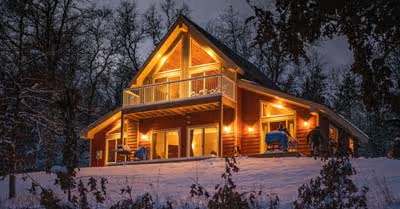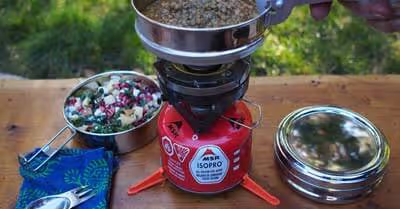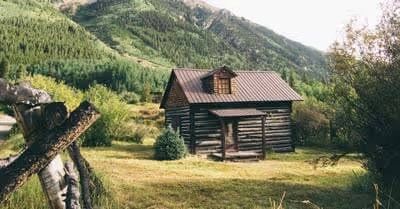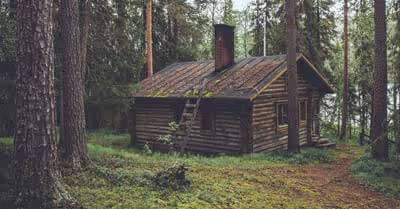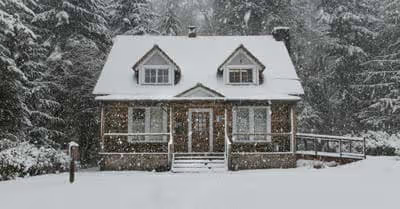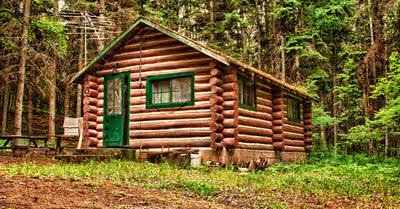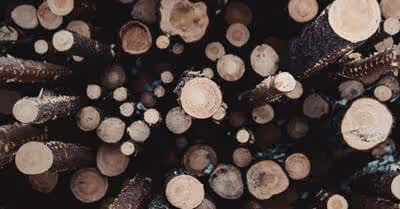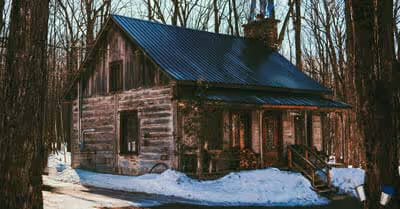Table of Contents
How Flammable Are Log Cabins?
It's not surprising that many new log cabin owners should have some paranoia about igniting a fire in their new residence. After all, wood is the go-to source for starting a fire when you're out camping in the wild. In fact, one of the most popular wood log lays campers use to start their fires while camping is called a "Log Cabin Lay", named as such because of its resemblance to a log cabin. From this, we can gather that not only is the material that log cabins are made out of flammable, but that the structure of a log cabin is the ideal structure for igniting a large and raging fire!
However, while the above logic may seem sound on paper, the wooden logs that are lining the walls of your log cabin and the wooden logs that you are throwing into your fireplace when camping are not the same. The logs that make up a log cabin are much larger, and that means that they take a much greater deal of time to become engulfed. As well, wooden logs used to build a log cabin are often treated so that they are not as flammable as wooden logs found in the wild in general.
More importantly, think about how you start a fire when you're camping. Do you simply throw your wooden logs into the fireplace and ignite the flame? If you've ever tried lighting a large piece of firewood directly, you know how difficult it can be to get the flame to stay. This is also true of your log cabin.
When camping, your wooden logs will not even begin to burn without the proper amount of tinder and kindling there to feed the flames. It takes a good deal of time and energy before just a medium-sized log can catch fire, let alone the type of logs that would make up the structure of your log cabin. Even a Log Cabin Lay cannot ignite without being filled nearly to the brim with kindling and tinder. As long as your log cabin isn't filled with dry leaves and twigs (or other flammable materials, but we'll get to that later), your log cabin is not very likely to become engulfed in flames just from the simple act of having a well-maintained fireplace.
Log Cabins Are Less Flammable Than Traditional Homes
Not only do log cabins pose minimal fire risk, but they are actually safer in many regards than traditional stud-and-drywall homes. Whereas log cabins are typically made from whole logs of wood, the type which we've already established take a good deal of both time and energy to even begin to burn, traditional stud-and-drywall homes are made out of cut wood. This cut wood is much more flammable than the wooden logs that would be used to structure your log cabin, being much more similar to the type of wood you would throw in your fireplace.
Not only are the wooden pieces used in traditional stud-and-drywall homes smaller and therefore easier for a fire to consume than wooden logs, but they also have a greater amount of surface area in comparison to their overall size than wooden logs. Whereas wooden logs are spherical, the smaller pieces of wood used in traditional stud-and-drywall homes are cubical, leading to an increased amount of surface area that will be exposed to the flame. For this reason, the wood in a traditional stud-and-drywall home is almost ideal for supporting a flame.
Fires Also Do Less Damage to Log Cabins
As well, since log cabins are likely to burn all the way through even if a fire does manage to ignite within the premises, the damage is usually easily treatable and surface-level, unlikely to have had any effect on the foundation. Comparably, if a large enough fire breaks out in a traditional stud-and-drywall home, the damage will most likely eat away at the foundation just as it is eating away at the surface. This means that fixing the damage will pretty much always entail starting the foundational work over from the very beginning. If this were to happen to your traditional stud-and-drywall home, it stands to reason that you'd actually be better off building a log cabin in its place.
For all of these reasons, log cabins should actually be seen as a safer place to have a well-maintained fireplace than a traditional stud-and-drywall home. Not only are they less apt to catch fire, but, if they do happen to catch fire, the damage will be both easier to maintain and easier to repair once the fire's gone. Log cabins have more advantages over traditional stud-and-drywall homes than just the aesthetic, and you're going to be just as safe having a fire inside of your log cabin as you would be inside of your traditional stud-and-drywall home, if not even safer.
Practicing Essential Fireplace Safety
While we're on the subject, it's important to remember that fire is always a possible threat in any home, whether a log cabin or a traditional stud-and-drywall home. Before making any generalizations, it's important to remember that the first step towards fighting fires is to practice proactive fire safety. This means properly maintaining your fireplace and ensuring that the fire stays where it's supposed to, only staying lit when you're there to watch it.
Keep a Boundary Around Your Fireplace
Firstly, it's important to maintain a proper boundary around your fireplace. Having loose and flammable items around your fireplace could act is tinder or kindling, turning your log cabin into a veritable Log Cabin Lay. Safety screens can be installed on your fireplace to help keep the fire in, and they can also prevent little ones from getting too close to the flames, receiving burns.
Never Leave Your Fire Unattended
As well, you should never leave the room while your fire is still going. Leaving a fire unattended for even a small amount of time could prove a mistake not worth making. Even if you're only walking out of the room for a second, it's easy to get distracted and forget to go back to check on your fire, which could be growing out of control without your watch.
Always Make Sure Your Fire Is Truly Out
You always need to be sure that the fire is truly out before turning your back on it. At the end of the night, it's easy to fall into the trap of simply seeing that no more flames are flickering and going to bed. While this may not lead to a house fire each and every time you do it, it's not good practice, and it greatly increases the risk of a fire occurring when you're asleep.
Always plan ahead and take time before going to bed to ensure that all the embers are smoldered and there is no more heat remaining in your fireplace. If you practice proper fire safety each and every time you utilize your fireplace, you will greatly reduce the risk of your log cabin (or any other residence) catching fire.
Keep a Few Working Fire Extinguishers On Hand
Finally, it's important to remember to always keep a few working fire extinguishers available in whatever residence you are currently occupying. This is true whether that residence is a log cabin or a traditional stud-and-drywall home. Be sure that your fire extinguishers are not expired and that they are ready, full, and usable for whenever a fire may break out. The sooner you manage to put a fire out once it starts, the less it will be able to spread and the less damage it will be able to do overall to your home.
Recent Articles



